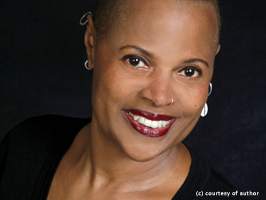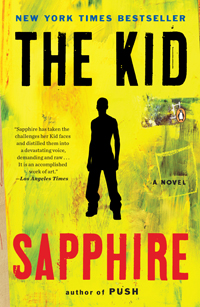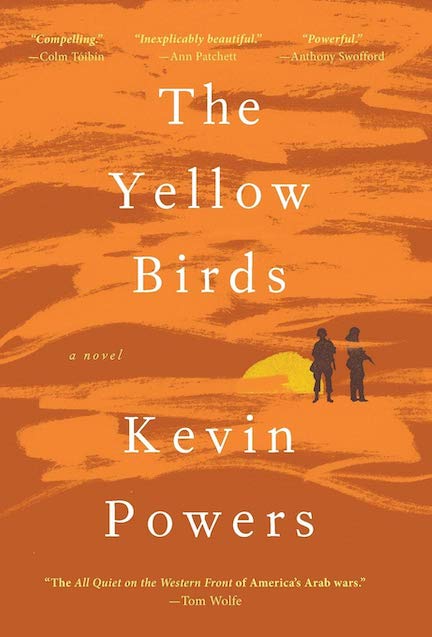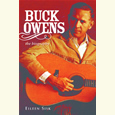Pushing Boundaries
In her latest novel, Sapphire revisits Precious and her family’s cycle of violence
In 2011, fifteen years after the publication of her novel Push (on which the Oscar-winning film Precious was based), Sapphire returned to her protagonist for a new book, The Kid. Though it is not, according to Sapphire , a sequel, it follows the lives of several characters prominently featured in Push. The first book centered on Precious, an illiterate, overweight, African-American teenager abused and molested by both of her parents. Push tracks her second pregnancy with her father’s child. The Kid is, in fact, that kid: her second child. The novel opens with Precious’s funeral, following her battle with AIDS, and from there the book belongs solely to Abdul, the kid himself.
 It’s a tough read, rife with brutality and almost every abuse imaginable. In her fiction and her poetry, Sapphire never shies from illuminating the darkest aspects of humanity, with careful attention to language and voice, and the results are staggeringly compelling. To follow Abdul through the traumatic ten years of his life that Sapphire covers here, from ages nine to nineteen, readers must get comfortable being uncomfortable. The reward is a story written with energy, ferocity, and fearlessness.
It’s a tough read, rife with brutality and almost every abuse imaginable. In her fiction and her poetry, Sapphire never shies from illuminating the darkest aspects of humanity, with careful attention to language and voice, and the results are staggeringly compelling. To follow Abdul through the traumatic ten years of his life that Sapphire covers here, from ages nine to nineteen, readers must get comfortable being uncomfortable. The reward is a story written with energy, ferocity, and fearlessness.
In advance of her appearance at Parnassus Books in Nashville on July 10, Sapphire answered questions from Chapter 16 via email:
Chapter 16: You’ve said that The Kid is not an actual sequel to Push. For you, what is the relationship between the two books?
Sapphire: The Kid is not a sequel in a traditional sense, in that we don’t enter into and follow up on the life of Precious Jones. It is a sequel in that we are looking at the life of Precious’s child, Abdul Jones, who is now an AIDS orphan. Precious Jones was the last and least served due to the combined effects of racism and homophobia when it came to receiving medications that might have saved her life. Precious’s death in The Kid is as much an effect of these forces as it is of the abuse she suffered as a child. Precious’s death and the forces that contributed to it are the “back story” with which we enter an entirely different character’s life and circumstances.
And we do see Precious again! We see her through the pained and often distorted memories of her “baby boy.” He has been her pride and joy and the center of her life. The reader sees the triumph of a devoted motherhood in a child who at the age of nine years old reads better than his mother did at eighteen, in a child who has great expectations that are, despite repeated pitfalls and abuse to come, never entirely dashed. The readers sees a boy who clings to the words of a mother who told him he could and would be something and strives as hard as any middle-class or rich kid to do so. So while in The Kid we see the triumph of Precious Jones, we also see the tragedy as her child is left alone and helpless on the occasion of her death and is repeatedly failed by the institutions of his city, state, and country that should have been in place to support him after his mother’s death.
Chapter 16: Unlike Push, The Kid is written in a stream-of-consciousness style that shifts between time and place, interweaving Abdul’s reality, memories, and dreams. Why did you choose this approach over a strictly linear narrative this time?
 Sapphire: I wanted to have a means of exploring a protagonist who, when depicted realistically, turned out to be an extremely unreliable narrator. So I needed entre to his dreams, his memories, his conscious rationalizations for his behavior (his lies), and his dissociations in a way that I did not with a character like Precious, whose heart is so on her sleeve. And I needed to carry this character over a period of ten years or so (Push happens in two years—between the time Precious is sixteen and eighteen). I also wanted to explore more than the immediate sources of oppression and neglect Abdul has visited upon him and to look back at the past (Slavery Days) in and without leaving a contemporary setting. A strictly linear narrative would not have served my purpose.
Sapphire: I wanted to have a means of exploring a protagonist who, when depicted realistically, turned out to be an extremely unreliable narrator. So I needed entre to his dreams, his memories, his conscious rationalizations for his behavior (his lies), and his dissociations in a way that I did not with a character like Precious, whose heart is so on her sleeve. And I needed to carry this character over a period of ten years or so (Push happens in two years—between the time Precious is sixteen and eighteen). I also wanted to explore more than the immediate sources of oppression and neglect Abdul has visited upon him and to look back at the past (Slavery Days) in and without leaving a contemporary setting. A strictly linear narrative would not have served my purpose.
Chapter 16: Both Push and The Kid address dark societal themes, such as the legacy of HIV/AIDS among African-American women and the dysfunction of the foster-care system. Is it a challenge to write about these issues without losing focus on the characters and their voices?
Sapphire: I think it’s one of the main challenges in trying to write fiction that has societal ills as a subtext. Sometimes I think that is why my characters are at times “larger than life,” so that they are not dwarfed by the tremendous challenges they face.
Chapter 16: As a teenager, Abdul finds solace in dance: “I know once I get warmed up and moving I’ll get over the pain.” That line refers to the escape dance offers from physical discomfort, but his love for dance runs deeper than that. Why is dance the medium through which Abdul finds healing?
Sapphire: We see Abdul in many scenes as a victim of abuse. But his life force (as I believe all of ours can be) is stronger than abuse. His desire and pleasure in his body and sexuality not only are not stamped out by the abuse, they eventually transcend the abuse and like a compass keep pointing him toward true north: dance and a healthy expression of his sexuality that doesn’t involve rape or prostitution. Even though all he knows by the time he is thirteen is abuse, somehow he keeps moving toward using his body for creation; once he finds he can have creative ecstasy through dance, he never lets go of that positive expression. It, dance, almost literally becomes if not life itself, a reason for living. More than once he is depressed and refrains from suicide or other self-destructive behavior because, “If I do that shit I won’t be able to dance.…” So, as a character he is looking for more than to just “escape” the pain of his existence or even to merely survive. Abdul wants to be somebody. He is ambitious and creative. Dance offers him a way to be somebody.
Chapter 16: As a writer, you were first a poet. How does that early work affect your fiction?
Sapphire: I think as a “poet-novelist” I am very attentive to how a text sounds on the page—dialogue isn’t a chore but a fun time to explore cadence, rhythm, dialect, and just the everyday poetics of common folk’s speech, which is quite beautiful. Poetry is another way of writing. Most novelists feel complimented when their prose is described as “poetic.” Few poets would welcome their poetry being called “prose-y.” Also perhaps as a writer who comes to novel writing by route of having first read and studied poetry I have a less rigid idea of what a novel is. I don’t think that’s necessarily a good thing but more just how it is.
Chapter 16: You worked on The Kid for more than a decade. Can you comment a bit on that process? How did you decide the book was finished?
Sapphire: It was a spiritual journey; I was on a quest, and a big part of that journey was to finish what I had started and to not give up. So I just kept chipping away at it. I wrote at artist’s colonies. I wrote at home. Some days I wrote hours at times, other days I wrote fifteen minutes. I gave up more than once but the desire to be faithful to this character kept pulling me back to the novel.
As far as finishing, I think I had raised the questions in the text I was exploring in my mind and seeing in the society. I could have gone on to answer those questions, but that’s not what I wanted to do as an artist.
Sapphire will discuss The Kid, newly released in paperback, at Parnassus Books in Nashville on July 10 at 6:30 p.m.





